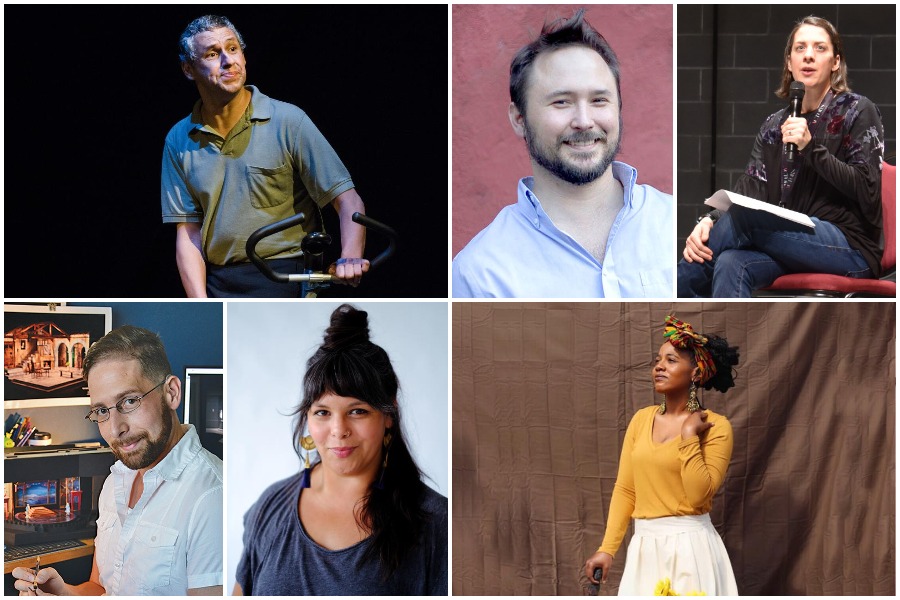This piece is one in a series on disability and theatre. To learn more about disability justice—a term used frequently in this piece, and originally coined “out of conversations between disabled queer women of color activists in 2005, including Patty Berne of Sins Invalid (and Mia Mingus & Stacy Milbern, who eventually united with Leroy Moore, Eli Clare, and Sebastian Margaret) seeking to challenge radical and progressive movements to more fully address ableism,” as Project LETS explains—we encourage you to look here and here.
Disability rights, disability justice, disability theatre, aesthetics, accessibility, segregation, and inclusion—these are some of the terms and concepts that buzz through the following conversation, a summit of sorts that was long overdue. All of these artists, including myself, have worked separately for many years, dealing with our own variations of these issues and challenges, without having a clear sense of communal support. Coming together over Zoom, as we did recently, to speak together about all these concepts—about both our common and our disparate experiences—has lifted our spirits.
And with this conversation, as a team we want to say to the American theatre field: Deaf and disabled theatremakers are here talking, planning, creating, and connecting to continue our artistic practice, but this time with the support of each another.
The participants are Clay B. Martin (he/him), artistic director of Spectrum Theatre Ensemble in Providence, R.I.; Taja Will (they/them), a dancer and choreographer based in the Twin Cities; O Mae Duchess-Davis (they also go by Oya, and their pronouns are they/them), a playwright and storyteller based in Minneapolis; Talleri A. McRae (she/her), co-founder and director of professional development and training of National Disability Theatre; and Sean Fanning (he/him), a San Diego-based scenic designer.
SAMUEL VALDEZ: Can we talk about the concept of disabled justice, beyond mere disabled rights?
CLAY MARTIN: I love that you asked me this question, because it is something that I myself and Spectrum Theatre Ensemble are really coming to terms with. It is the next step of what we are focusing on. The way I see it is that rights are things we can talk about in the present making us equal, so everyone can share in regards to disability, as with other marginalized groups. In terms of justice, the way that STE is seeking to address this now is through projects that are both intersectional and deal with the idea of truth and reconciliation, having to talk openly about discrimination, about genocide and euthanasia that occurred in our past, because it does happen more in the disabled community than other marginalized communities. How can we reconcile this history in order to not only become equal but make reparations within our own communities, within our work for those people that have been marginalized, killed, and discriminated against, euthanized in the past? I would like to acknowledge that I am not an expert in this area and would love to hear from others. I am learning as we are all learning together.
TAJA WILL: I really appreciate Clay saying, “I am learning as we are all learning together.” My first question when invited to do this panel was, Am I right for the panel? Am I enough? Do I know enough, as someone who lives with a chronic illness? Is that enough? Does it qualify me? I center my personal experience with disability rights and disability justice as an expanded community that has taught me how to advocate for myself. I have learned so much from the leaders of disability justice collectives and movements.
For me it lands in equity. I am not trying to find equality but am always looking for the gateway that is equity. Just as there is no monolith among folks of color or folks of color from one heritage—I am a queer Latinx person, and there is no monolith—there is no monolith among disabled folks. So equity really must anchor the line of questioning and the line of values that can then be part of a movement.
O MAE DUCHESS-DAVIS: When I think of rights, I think more of a thing we are looking toward, like the government. When I think of justice, I think of a lot more communal stuff. Having conversations like these where we are just talking and uplifting these things. Like Clay said about how important intersectionality really is, I think too often that even with these conversations, there are groups who sometimes get left out, like me being disabled and from a poor community. There are a whole lot of different disparities coming with that. How are we as a community also looking out for those people, uplifting those voices and those stories?
TALLERI A. MCRAE: When I think about the difference between disability rights and disability justice is, I think about the way we talk about disability—the way we use that word. Disability rights kind of defines disability in different ways. One possibility that disability justice practice can offer us is the opportunity to really redefine that for ourselves and for our communities. Then when I think about making theatre, how exciting is it to think about being able to redefine what that word, that community, that experience means, in a logistical sense?
SAMUEL: Disability justice is a new topic for me too. But we are individuals who have had to deal with disability all our lives without having the opportunity to focus on these larger issues. This is our opportunity to voice our opinions and raise them up. I love that I can resonate and identify with everyone present. Moving on: In theatre, how do you see disabled representation as it relates to disability justice?
TAJA: This is a question of the what versus the how. The way I have been able to invite and integrate folks with disabilities, including myself, into my work is through the how, and the “how” is access, equity, and values. It is always asking what people need and prioritizing the needs over production, over making every minute, every dollar worth it, because we want our bodies to work in body-based form. I work primarily in dance, and we need our bodies to be our collaborator because our body is our vessel. My body is responding to the content, so it is important that I can manage my chronic illness symptoms and still be present enough to be virtuosic. Virtuosity is not something that is housed inside of any standards or status quo in any of the lineages. I think about design as a director and choreographer. The “how” is really a dialogue with that.
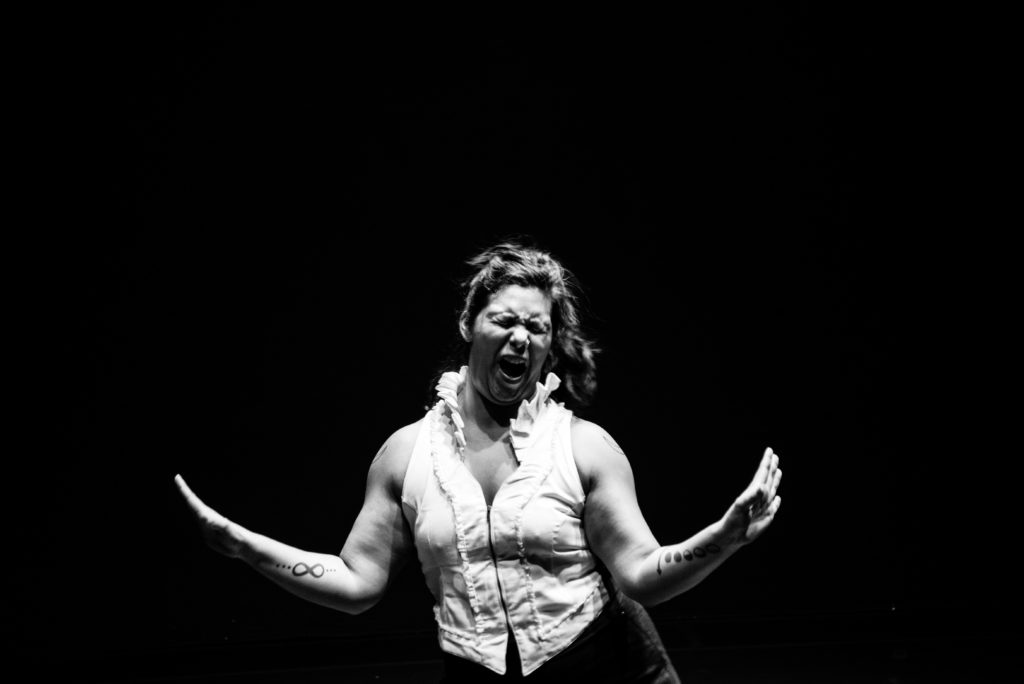
For example, I had a solo show that toured, and for my chronic illness I needed access to breaks every 10 to 20 minutes. So in every work that I have done, I cannot guarantee I will make it back onstage. I do not guarantee an ending to the work. I have collaborators who work with me on that because it is not just me with chronic illness in the ensemble. We understand how to work with the improvisational nature of it and to take care of each other in that space and time. I have talked a lot about the “how”; the “what” is the content of how we tell our stories.
SAMUEL: Thank you so much for that, Taja. You bring up an important word I would like to include in the conversation: “access,” or “accessibility.” What does that mean? Why is that important? It seems to me that we can’t be represented in the theatre unless we have access to it.
SEAN: I was thinking about the fact that theatre and performance is an industry predicated on making judgments about people. Choices about casting: Does a person seem like the right type for a role? Can they play nice? Making choices about designers and directors: Has that person proven they can do something of this scale? Can they handle the budget? Do they know the right people? Can they play the game? But we are disabled and have established careers as theatremakers. We have done so by proving ourselves while downplaying or hiding our disability. In my case, teching a show in the dark, going to a meeting trying to understand people, trying to make do with the available accommodations, and often feeling like asking for more will be asking for too much, because it is a business that can make or break a person’s career over very trivial things. Over very political things. You worry about having that reputation as being somebody who asks the boss for things that are too hard to deliver. It is important we create a theatre that does not do that kind of gatekeeping and instead carves out an open space for disabled artists where it is accepted and encouraged.
Just like this roundtable. In the email that was sent out, the first thing that was asked, “Let us know if you need any accommodations.” That was not something I had to bring up. It was just built in, baked into the cake. For me that is what access is. It is not just about people being willing to do things for you, or you having to insert yourself into the situation and making a nuisance of yourself. It should just be a part of what we are doing.
CLAY: Thank you, Sean, for saying that. One of the things I am proud of is that Spectrum Theatre Ensemble created their core values and communication ideas based on that. One of the first things they came up with as a company was the mantra of what you can provide and what you need, as a form of communication for any artist joining us, which as a base made for better collaboration as a company.
SEAN: It is magical when a theatre provides that access, not only to the disabled artist but to everybody. How much it improves the experience for people who do not identify as disabled just because those accommodations are there! Suddenly things are better, making communication better. Artists can actually have honest conversations about what they need, and that extends to everybody on the production team.
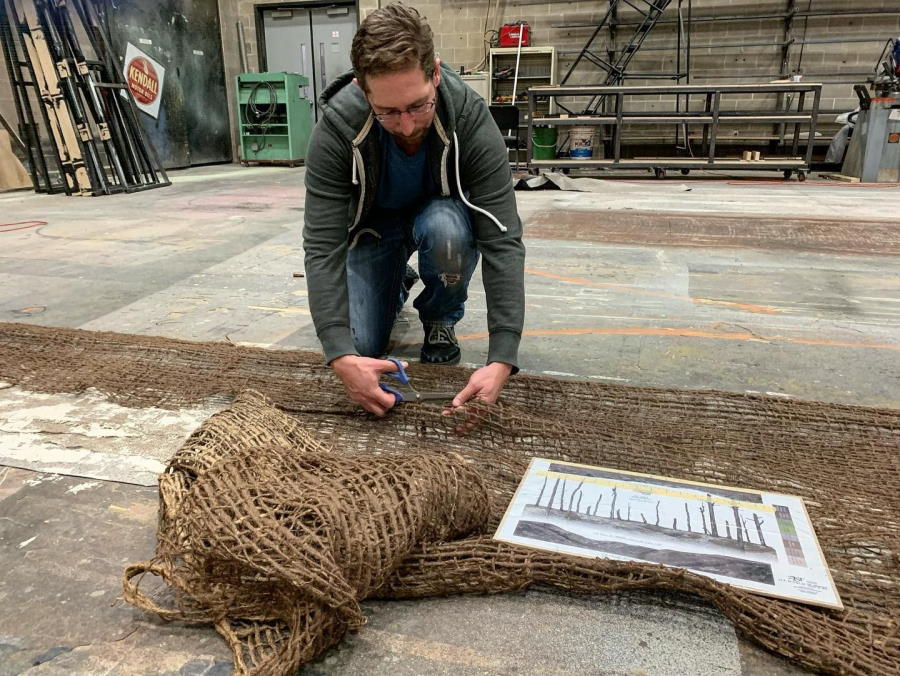
CLAY: We just did a national search and interviewed many candidates for our first full-time executive director. Many candidates told me how great it was that for the first time they felt comfortable talking about their disability or condition in the interview, it not being a negative thing. For us, of course, it was a positive thing.
TALLERI: This is taking me back to where Taja started, with the idea of starting with the “how”—thinking about the space you want to create and letting the content come from that. To me a powerful ingredient is to be truly accessible with a big “A.” An access-centered process is a space where people feel like they can bring their authentic selves into the room. I have been in spaces where people’s authentic selves have been welcomed, changing the whole process and the “product” as well.
O: Also, the practice of casting non-disabled actors in disabled roles is something I’ve especially been thinking about, since I am getting more into performance. I have a problem with that practice, because I see a lot of it happening. Also I see many writers making disabled people these background characters. It is not right.
SAMUEL: I know what you are talking about, Oya. Another big question for the panel: What is the disabled aesthetic in theatre?
TALLERI: I would just take the “the” out of the question and ask, “What is disabled aesthetic?” What could it be? What does it look like, up to this point? What might it look like in the future? As a teacher I often like to think about these questions when creating a space where everyone can do their best work. I have tried to shift away from standard lessons, making my own accommodations. I have also tried to shift away from the idea that there is a magical “universal design” that is going to work for everyone. I am trying to think about a disabled aesthetic in terms of two artistic words. The first is variations, and the second one is translations. How does this story, this moment, translate in different ways? And what are the different variations of this? How does this work with different bodies, minds, people, spirits in the room?
SEAN: We just did something like this about a year ago with Talleri. In the design world we have this phrase, “form follows function.” In a good design, the form of something comes out of the function it was intended to take. I think that is a good thing to apply toward the question of, “What is disability aesthetic?” It is about stripping away the generalization of purpose, looking at the specific needs of the characters or the story. In addressing this from both the design and direction standpoint, responding to the nature and needs of the story you are telling. If you take the idea of form follows function applying to disability theatre, it can lead to exciting results.
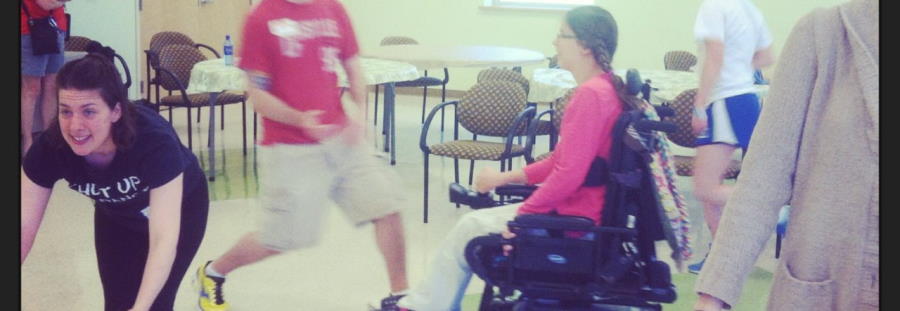
O: I do not think there is a disability aesthetic right now. I definitely think it is something that needs to be created. My hope with it being created is that everybody is being taken care of. That we are taking care of each other, and that the word intersectionality is used a lot through it. I think it is so important to put the poor as well as Black and POC people at the forefront of it. I think those specific experiences have not really been told and need to be told.
TAJA: Thank you for saying that, Oya. I agree. And I think about aesthetic as a word that has a relationship between the performers and the audience. The invitation for the audience to be on the journey. I think it also has a connection with meaning making. When we talk about meaning making, next to and with disability, I think it is asking a question or asking the audience to come on a journey that looks different and feels different from what you might be expecting. It’s about the invitation for the work to be viewed and how we care for audience and performers before, during, and after the production. I actually think about this as an audience member and as someone who often feels trapped in a theatre—the fear of needing to leave for my body’s comfort or safety. When I think about me making the work, I think: How can there be permission that is explicit for people to meet their own needs? How can I help them meet their needs as an audience? What are the doors and windows that they can get out of if they need to? This might look and feel different, and it might be uncomfortable. Just think about the discomfort within the lineage of being disabled performers.
CLAY: I am going to speak from the point of view of neurodiverse aesthetic, which means people with neurological or sensory needs differences. If we are talking about aesthetic being the shift in theatre, the aesthetic shift I see for neurodivergent inclusion focuses on the audience looking different and behaving different, in terms of accepted audience behavior. One thing we are starting to teach and I am advocating for is how neurotypical people can adjust what their expectations of other audience members are. What we do when we create sensory-friendly theatre or performances is, we ask the neurotypical audience members to adjust if someone is moving around in their seat, responding to the person onstage, in need of headphones, or needing to look at their phone because that is helping them with an emotional adjustment to intake what is going on—that they do not tell the usher to get rid of them. The most beautiful thing I have found is that 100 percent of the time the audience is not only on board with it but it becomes something magical for them to be a part of that experience.
SEAN: I really liked the point that you made, Clay, about neurodivergent audience members. It made me think about the way theatre spaces often are right now: hermetically sealed, quiet spaces, where you dress up, come in, sit down, and be quiet. Curated by a lot of old white people, mostly. I think the theatre experience is really muted by all that. In its early days theatre was about participation and speaking up if you were in the audience. It was about reacting and allowing yourself to be part of the moments happening onstage. Maybe disability theatre is about extending that privilege to the entire audience, allowing for space where there is more open connection between the performance and audience.
SAMUEL: There is one word that really comes to mind when we talk about aesthetics, and that is “beauty.” I find beauty in communication, in acceptance. In bringing the audience into a space they have not been before. In helping the person sitting next to you and not judging them but supporting them. Speaking of the audience and who we make the work for, what do we think about the phrase “disability theatre”? Does it raise for you the worry of segregation or silo-ing?
SEAN: I think the notion that it would lead to segregation and silo-ing discounts how ubiquitous the disability community really is. It is larger than most people think. Everybody knows somebody who is disabled. There are also many who are disabled, but they do not yet publicly identify. The other thing to remember is that being disabled is not a fixed identity for everyone. Anyone can become disabled during their life. That is just a human fact. Disability theatre is about creating a safe space where people can self-identify, connect, build, and work with their needs acknowledged and reinforced. The work should deal with intersectionality, not just disability but also race, poverty, and gender identity.
I think the future of disability theatre must be about including people who have been able to hide in plain sight. I also want to talk about how there is a bit of a misconception about elitism in the disability community and about purity tests. Taja talked about being afraid of not being “disabled enough” to be in this roundtable. That is a major misconception a lot of people share. In my own experience, when I first worked for the historically Deaf theatre company Deaf West, I was concerned that I was not “deaf enough.” I was concerned that I spoke and did not sign as a primary mode of communication; though I understand sign language, I cannot sign back. The fact that I straddled both in the Deaf and the hearing world, I was worried that meant I would not fit in with a Deaf theatre company. The reality was so far from this, and it immediately put me at ease. Within a company like Deaf West, and also National Disability Theatre, there is a recognition that disability is a spectrum and may come in many forms.
A major part of what disability theatre needs to do is dispel the notion that disability is about wellness or functioning—that you must fit in some predetermined idea to be “disabled.” We must reinforce the idea that all are welcome, even those with less visible disabilities, chronic illnesses, or mental illnesses. Even those who are adjacent to and interconnected with a disability community need to feel welcome.
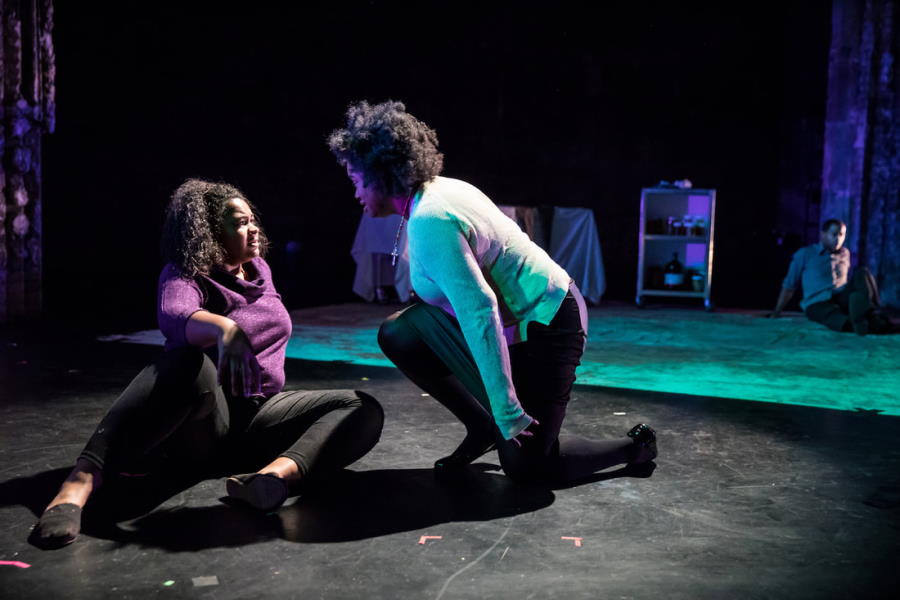
O: I was wondering about the worry about segregation—who is that supposed to be applied to? Is it supposed to be the non-disabled community, that they feel segregated because they are not being included in these plays? I would say first that the stories disabled people have are just like race disparities or any other disparities. People who do not have that disparity can still connect to that with empathy. And when it comes to non-disabled people segregating us, we have always felt that segregation. I would think that if they felt segregated in those spaces, I would say they should sit with that discomfort, because that kind of discomfort is what we have to feel every day.
CLAY: I have seen this in respect to how theatre ensembles form. National Disability Theatre purposefully has every person in their company identify as someone with a disability, whereas Spectrum Theatre Ensemble is neurodiverse, meaning we have people who are both on the spectrum and purposely people who are not on the spectrum working together. Disability theatres in previous times were created by people without disabilities, as a place to serve them, rather than a place by and for them, and that could definitely be seen as segregation. My goal as an artist is that, by the time I retire, STE is not a neurodiverse theatre company—because every company is neurodiverse. The only place I have seen anything like segregation in this concept is with many theatres’s sensory-friendly or neurodivergent inclusion initiatives. I tried to find ways to make STE more inclusive and more ubiquitous, so that no performance is strictly a “disability performance.”
TALLERI: I just want to clarify one thing. As a young company, National Disability Theatre sets out to create primarily disabled spaces. Even in our initial project, we found so much value to having people who identified as non-disabled be part of the process. As we have been talking about, that identity can be fluid, and can even change throughout the course of working on a show.
I want to go back to Sean’s initial thought and Oya’s response, which both have a lot of value. Finding spaces of productive discomfort can be really helpful. There can be perceived or real segregation between non-disabled and disabled people. Within the disability community, we are still learning how to build coalitions and create spaces that have crossed disability solidarity and disability support. Spaces that have named themselves as disability justice spaces are models for this, and offer ways to create these primarily intersectional spaces—spaces that lift up people with multiple marginalization, who have felt discrimination in multiple ways. Many of us are still learning what those spaces are on an intellectual level and what that feels like on a visceral level.
SAMUEL: Why is it important to include disabled individuals in your company? What are the benefits?
O: It is important to show a spectrum of all people, and it is important for disabled youth to see themselves onstage. In playwriting, it is important to have people who know what they are talking about. It is beneficial to get the most authentic version of the disabled experience. It benefits the company, because it is an authentic experience.
TALLERI: If you start with the “how” and the goal of making sure everyone has their access needs met, I am always surprised and delighted by the artistic work that can come from that. It is almost like I let that do the work for me, and then just get to play with what there is.
CLAY: Because of societal factors like the COVID pandemic, the wars we have been engaged in for the last 30 years, and the historic trauma brought on marginalized communities over centuries, it is predicted that in the future over 50 percent of our society is going to have a disability of some kind. This is not a niche market. This is your audience. It is not just how it would benefit your theatre; it is essential for your theatre to include disabled people. If you want to be a theatre in the future.
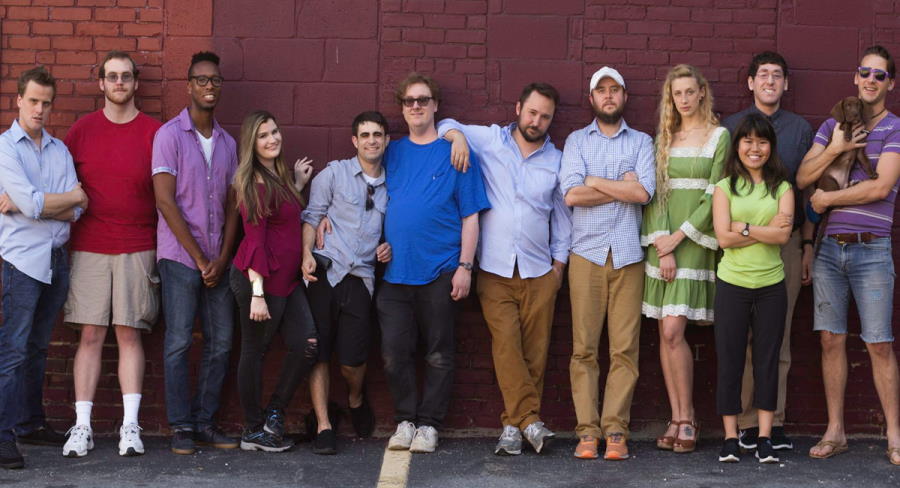
TAJA: I feel the benefit is that it enriches the work—that the work is not so much the boss or a thing that cannot be shaped and changed. As a dance artist, a choreographer, I am never asking, “Can you do these forms, these lines, this speed?” I rather say, “Let’s see what we can make together.” I work from conceptual content. The way I form ensemble in a project-based way is to ask, “Are you down to be in coalition? Are you down to feel like family for a couple of years, and we will make some art together along the way?”
SEAN: I feel as a disabled designer, my ability to code-switch, adapt, and do all the things that I have had to do in my life have changed my approach as an artist. Theatre would do well in bringing in more disabled people like me because they bring a different artistic process to the table that enriches it for everybody. We put ideas together differently and respond to things differently.
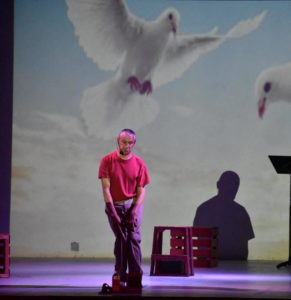
SAMUEL: I have been doing a show for about four years, and every time, at the end of the performance, audience members come up to me to say how much they identified with the story. These are people who do not have a disability. This has shown me that everyone can identify with our stories. We are not that different from non-disabled people. We just have a different way of dealing with life and telling our stories.
Samuel Valdez (he/him) is a playwright, performer, and director based in Tijuana, Mexico. His plays include Soy Yo/It’s Me, P-13-VIVE, Ambos/Both, and And He Became Man.
Creative credits for production photos: Skin by O Mae Duchess-Davis; direction/sound design/blood effects by Tyler Olsen; costume design by Rhiannon Fiskradatz; props design by Terri Ristow; blood and prosthetics design by Craig Kossen. And He Became Man by Samuel Valdez, music by Isidro Olvera.

